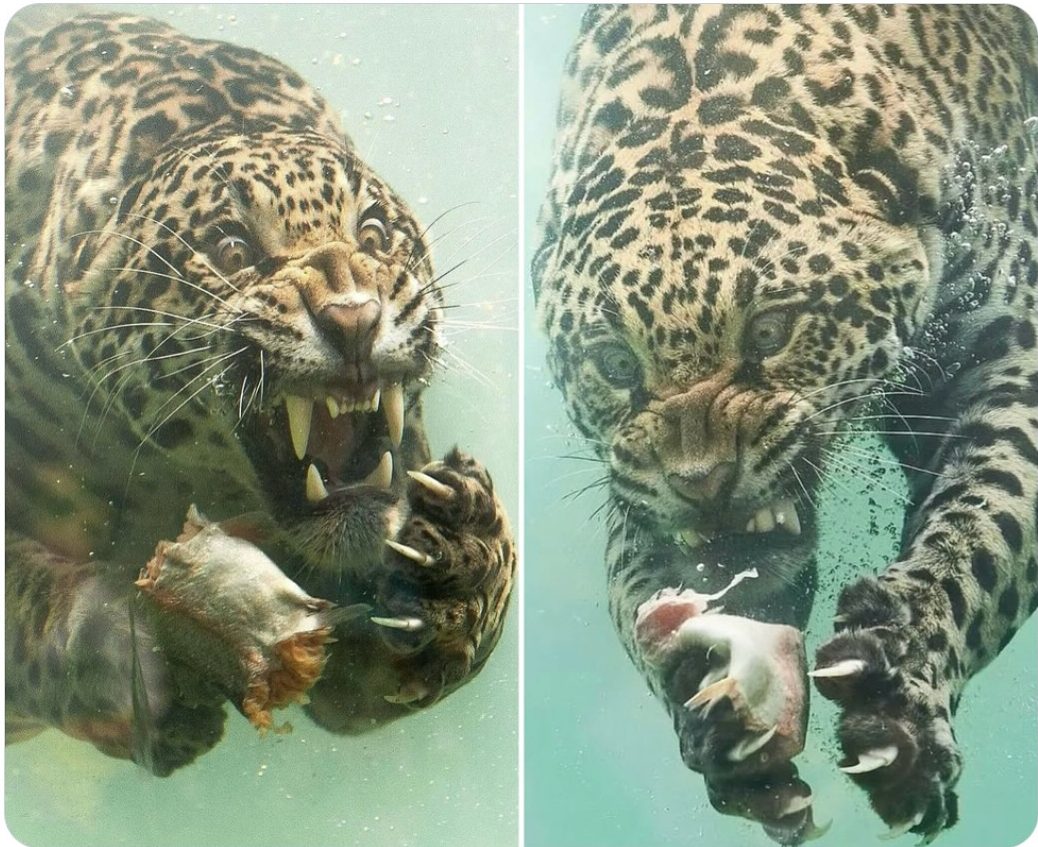Photographer Captures Jaguar Diving Underwater for Food — The Rare and Terrifying Power of Nature Revealed
There are moments in nature that stop you in your tracks, even if you’re only looking at a photograph. One of those moments came when wildlife photographer Herbert Van Der Beek managed to capture something so rare and so powerful that it feels almost surreal — a jaguar diving underwater in pursuit of food. For most people, the very idea of a big cat swimming is surprising enough, but seeing one plunge beneath the surface, eyes locked on its prize, claws extended, and jaws wide open, is both breathtaking and terrifying at the same time.
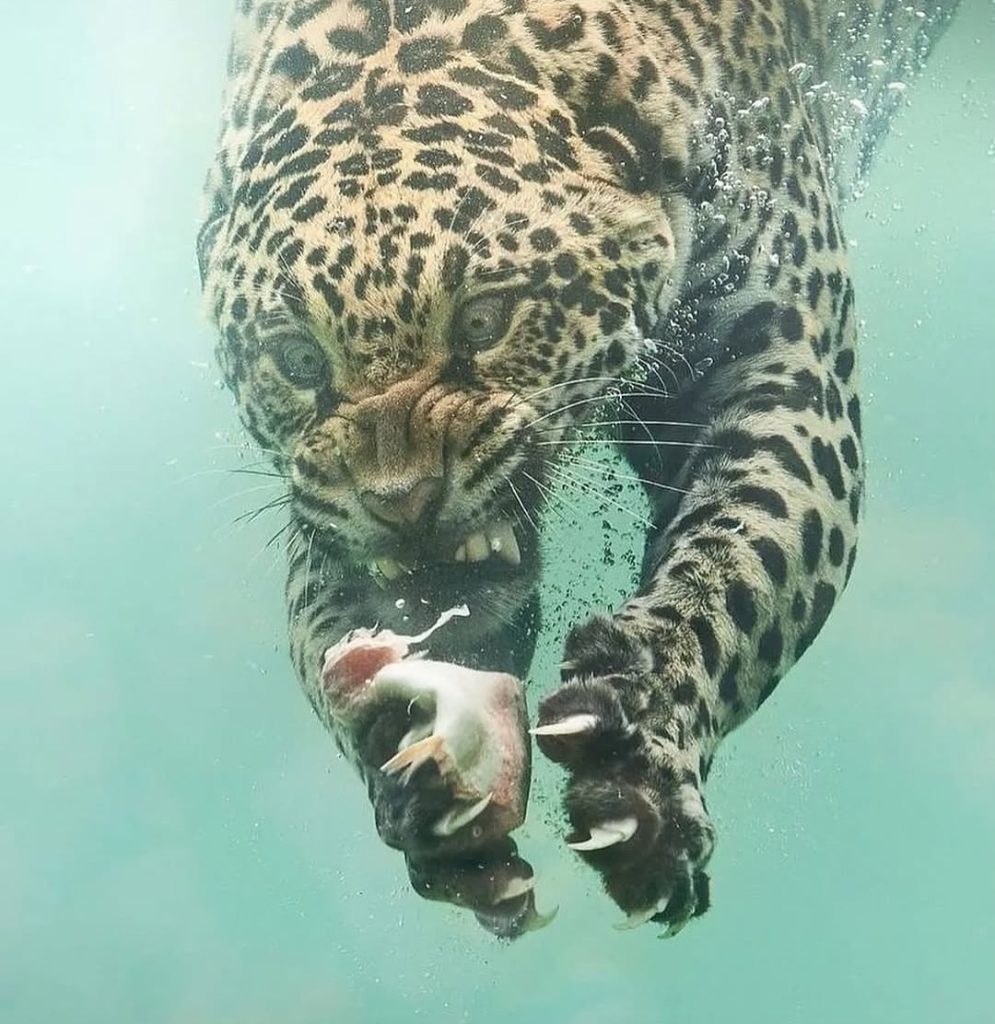
Jaguars, unlike many other members of the big cat family, have a long and fascinating relationship with water. Tigers are known to be excellent swimmers, but jaguars are equally comfortable in rivers, lakes, and wetlands, especially in their native range across Central and South America. Unlike lions, who prefer to stay on land, or leopards, who tend to avoid deep water, jaguars have adapted to thrive in lush, water-filled environments like the Amazon Basin and the Pantanal wetlands of Brazil. These places are rich in prey, but they often require swimming and stealth in marshy, flooded landscapes. Jaguars not only tolerate water — they embrace it as part of their survival strategy.
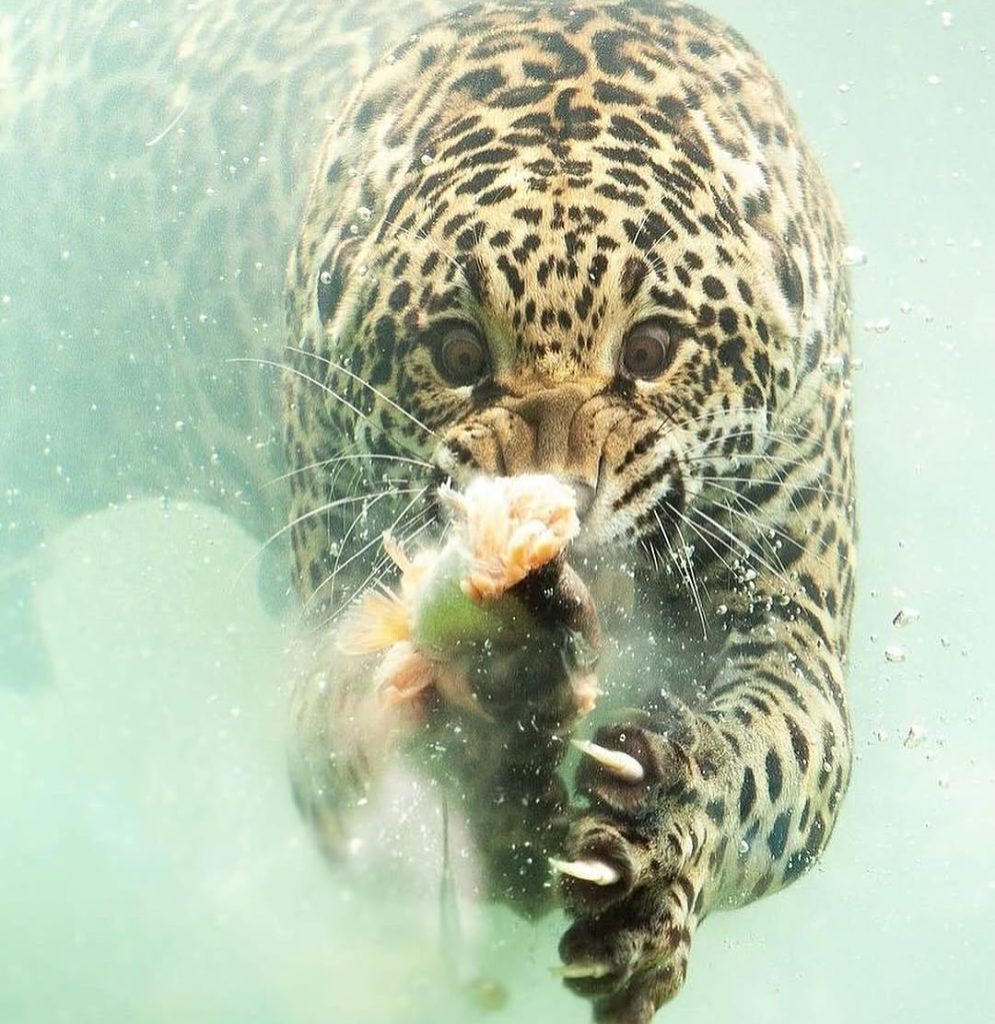
What makes the image so gripping is the expression of raw determination on the jaguar’s face. You can almost feel the intensity of its hunger, the way evolution has shaped every inch of its body for hunting, even in conditions that seem so unnatural to us. Underwater, its spots blur and ripple in the currents, yet its eyes remain fixed, unblinking, locked onto its meal. Its paws, powerful enough on land to crush the skull of prey, now double as paddles, pulling it forward with shocking strength. And its teeth, bared in the photograph, remind us why this cat is considered one of the most powerful biters in the animal kingdom. Jaguars have jaw strength that far exceeds lions and tigers relative to their size, capable of piercing the skulls of caimans or cracking open the shells of giant turtles. Seeing that same jaw clamped around a piece of food underwater adds another layer of awe to the story.
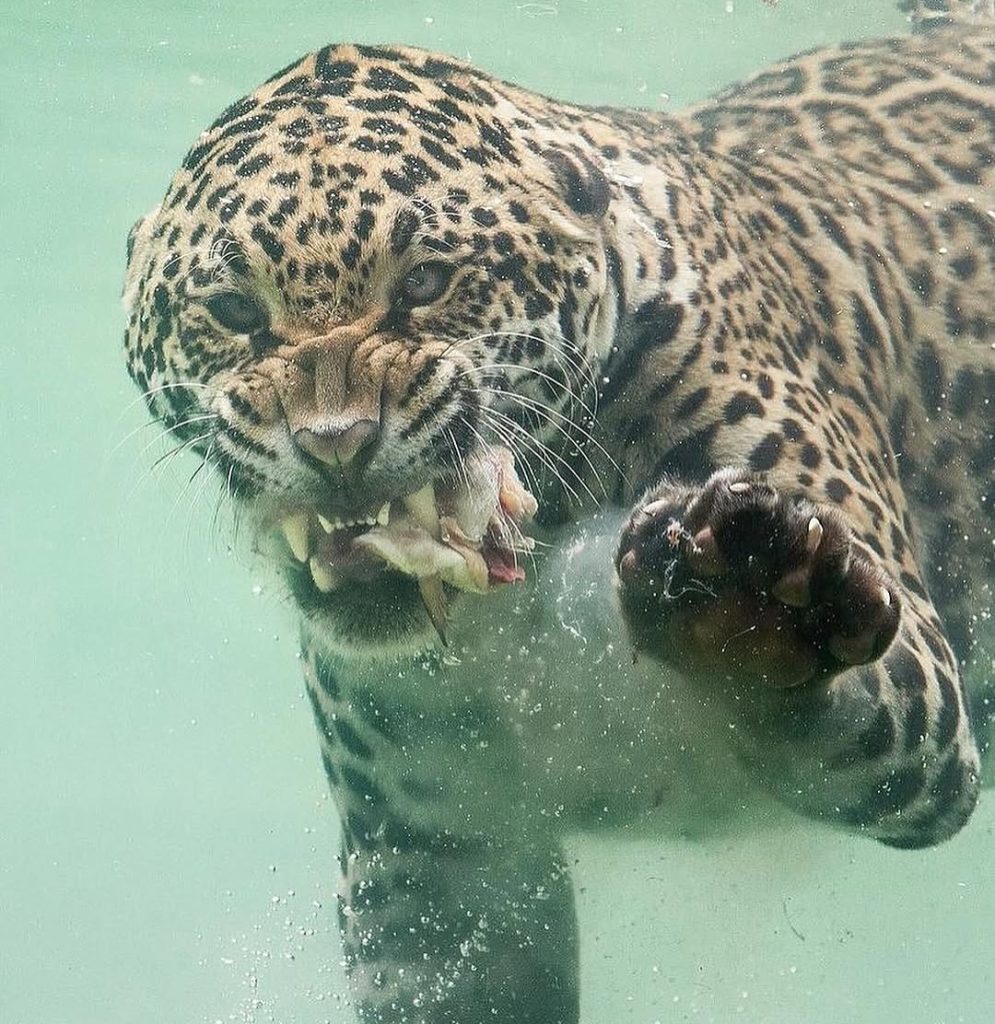
Herbert Van Der Beek’s work here doesn’t just show us an animal doing something remarkable. It opens a window into a world that very few people ever get to see. Jaguars are elusive. They are masters of camouflage, blending into the dappled light of forests and wetlands. For years, even seasoned researchers would count themselves lucky to catch a fleeting glimpse of one in the wild. To have the chance to not only see one but photograph it mid-dive, in the midst of such primal action, is the kind of moment wildlife photographers dream about.
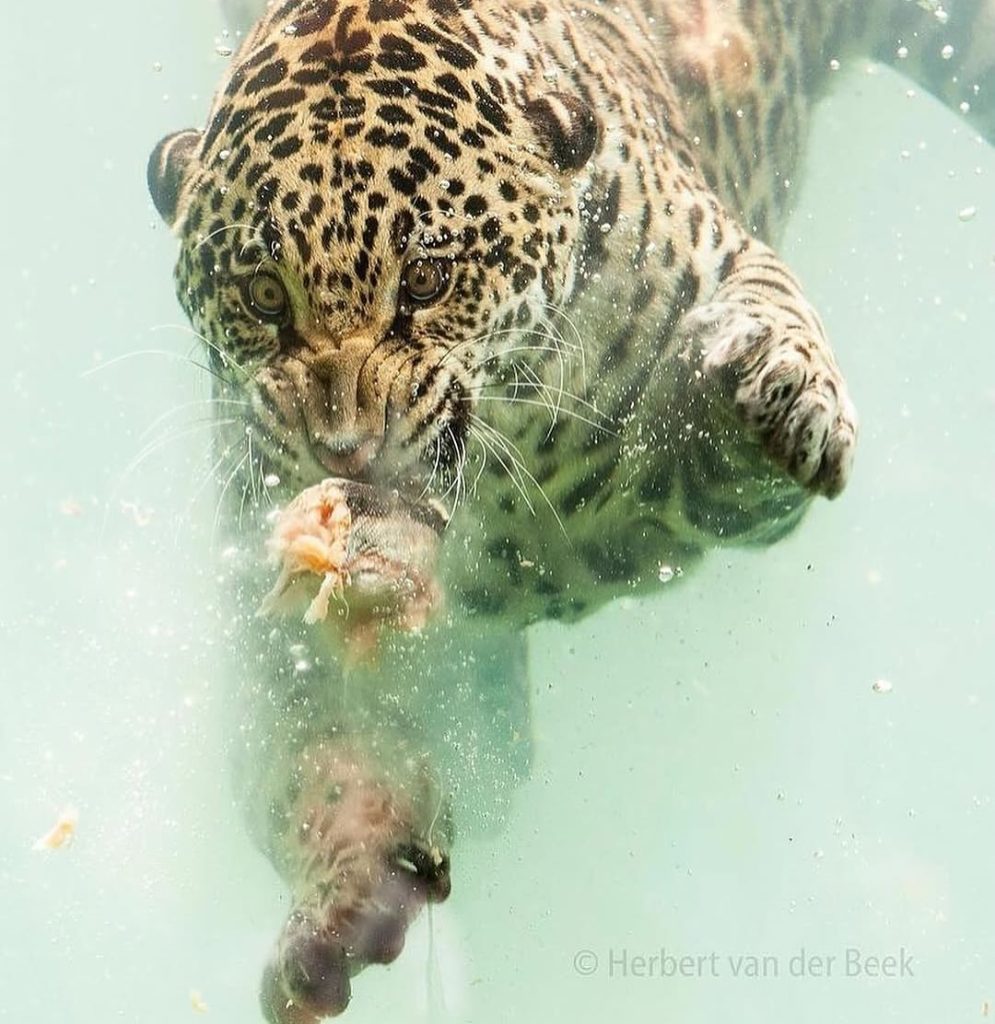
There’s also something symbolic about the image. When we think of predators, we often picture them on land, running down their prey in a chase or ambushing from the shadows. But here, underwater, stripped of the sounds of growls or the crunch of footsteps, all we have is raw power suspended in silence. The bubbles rise around its face, its whiskers stream backward, and the water distorts the details — and yet the menace and beauty come through more clearly than ever. It feels like looking at nature’s version of a myth, as if a creature from folklore has come alive.
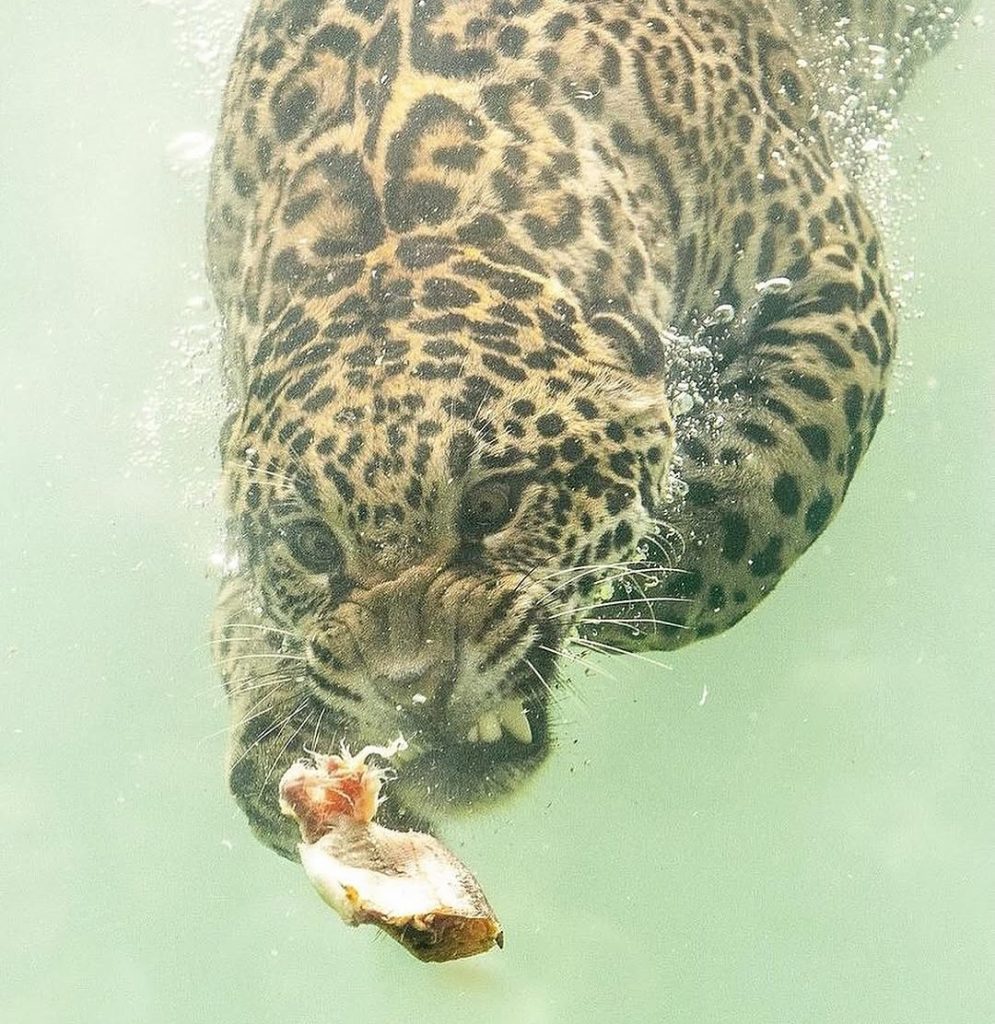
For centuries, jaguars have held a mystical place in the cultures of the Americas. In ancient Mayan and Aztec mythology, the jaguar was considered a symbol of power, protection, and even a guide to the afterlife. Shamans believed jaguars could cross between the physical and spiritual worlds. When you see this photograph, you can understand why. There is something otherworldly about watching a jaguar dive, eyes burning with focus, disappearing into the depths like a creature born of two worlds — land and water.
Of course, there’s also an educational element to all of this. Many people are shocked to learn that jaguars can and do swim frequently. They rely on this skill for hunting prey like capybaras, caimans, and even fish. Yes, fish. Jaguars are opportunistic hunters, meaning they will take whatever prey is available. Their adaptability is one of the reasons they’ve survived for thousands of years despite changing habitats and increasing threats from humans. While most cats avoid getting wet, jaguars use water as an advantage, slipping through it quietly to stalk their prey in ways that would be impossible on dry land.
Looking at the photo, you may also feel a chill of fear. It’s not just the sharp teeth or the claws extended in mid-lunge — it’s the realization that this is a predator fully in its element. Imagine swimming in a river where such a creature lurks silently below the surface. It makes sense why locals in jaguar territory respect these cats deeply. They aren’t just hunters; they are rulers of their domain, comfortable in places where few other predators can dominate.
What Herbert Van Der Beek captured is not just a snapshot of a jaguar but a reminder of nature’s complexity. Too often we look at animals in zoos or in documentaries and forget the incredible range of behaviors that they carry within them. A jaguar underwater is not an anomaly — it’s part of who they are. It’s just that most of us never get to witness it. This photograph bridges that gap, bringing a rare piece of the wild into our living rooms and onto our screens.
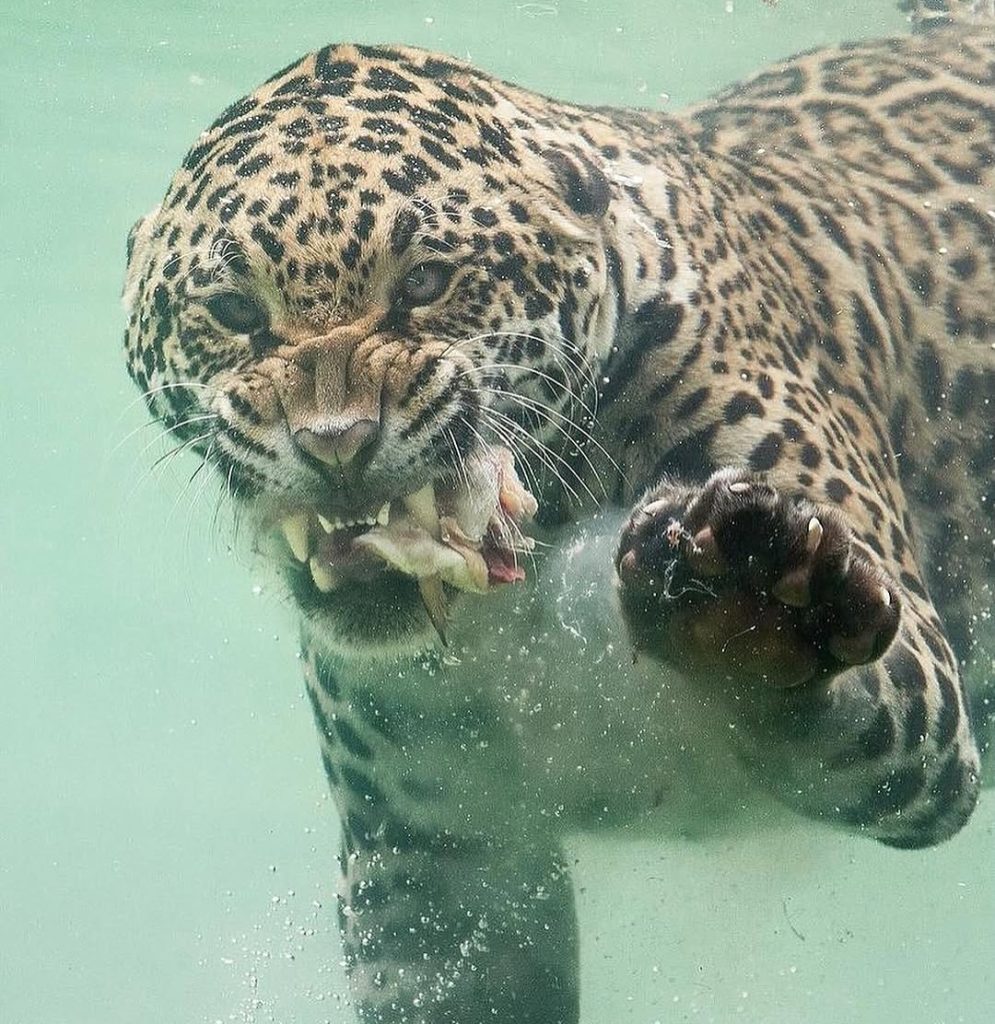
It also sparks a conversation about conservation. Jaguars are classified as near-threatened, with their populations declining due to habitat loss, poaching, and conflict with humans. Deforestation in the Amazon and expansion of farmland in South America continue to shrink the areas where jaguars can thrive. If we are not careful, extraordinary images like this could become records of what once was, rather than glimpses into a still-living world. Protecting jaguars and their habitats isn’t just about saving one species. It’s about preserving entire ecosystems where they play a crucial role as apex predators.
When I stare at this photograph, I feel both awe and urgency. Awe at the raw beauty of a predator so perfectly built for survival, and urgency to make sure that future generations can also be astonished by such moments. The jaguar diving underwater is more than just “truly terrifying,” as the caption suggests. It is truly humbling. It reminds us that no matter how much we build and expand, nature still holds wonders that can shock us, terrify us, and inspire us — often all at the same time.
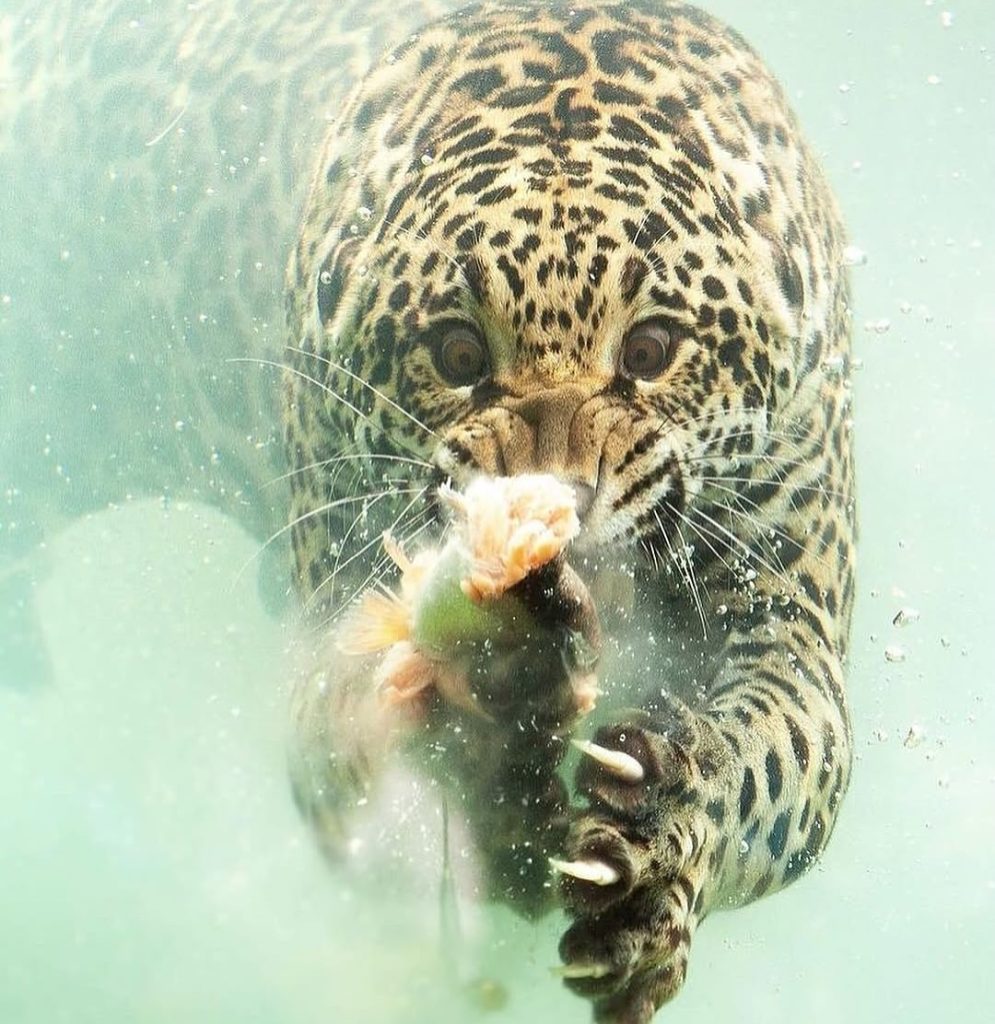
So the next time you hear someone mention jaguars, don’t just picture them lounging on a tree branch or stalking silently through tall grass. Picture them underwater, eyes like fire, claws outstretched, bubbles rising as they push forward with unstoppable energy. That is the jaguar at its finest: fearless, adaptable, and endlessly fascinating.
Herbert Van Der Beek gave the world a gift with this photograph. He reminded us that there are still mysteries left in the natural world and that even animals we think we know can surprise us. And maybe, just maybe, he reminded us that we owe it to these creatures to protect their wild, watery homes, so that their dives beneath the surface continue for centuries to come.

Daniel Reed is a curious mind with a passion for breaking down how the world works. With a background in mechanical engineering and digital media, he turns complex ideas into easy-to-understand articles that entertain and inform. From vintage tools and modern tech to viral internet debates and life hacks, Daniel is always on the hunt for the “why” behind the everyday. His goal is simple: make learning feel like scrolling through your favorite feed — addictive, surprising, and fun.
